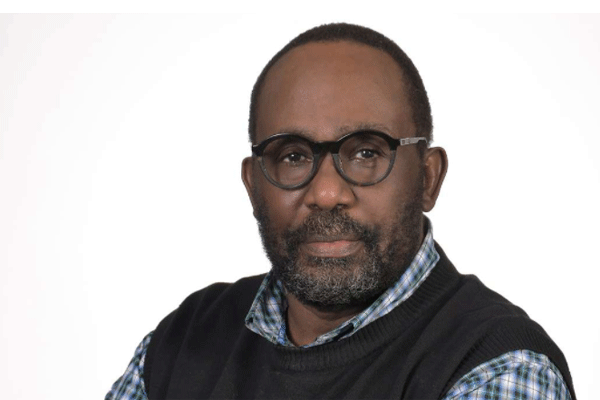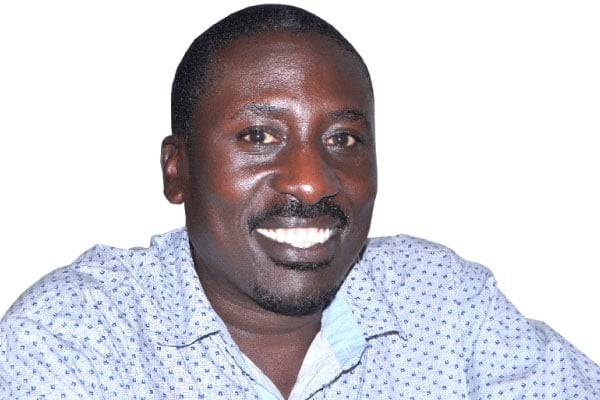Prime
Writer Kakwenza, and the sum of our worst fears

Author: Charles Onyango Obbo. PHOTO/FILE
What you need to know:
- And even if the man in the photographs wasn’t him, our fear shouldn’t be any less.
At the start of the week, photographs began circulating on WhatsApp showing an extensively tortured man, with face out of camera view. His back is lacerated with over 60 whip marks, likely made by a wire lash.
There were claims they were of writer Kakwenza Rukirabashaija, who was arrested on December 28 and only released at the weekend.
Kakwenza, the author of the hard-hitting “The Greedy Barbarian”, read by some as an attack on President Yoweri Museveni, was arrested following a volley of searing social media posts against the president, and his son Lt Gen Muhoozi Kainerugaba, who is also commander of the Land Forces of the Uganda People’s Defence Forces (UPDF).
As the security services played cat and mouse with Kakwenza, refusing to bring him to court on a schedule ordered by the court, his lawyer Eron Kiiza alleged that the author had been tortured while in detention. When he was taken to his house by security officers for a search, his wife was shocked by his state. He was bloodied and limped as if his feet were on fire.
Kakwenza was constrained by the court from publicly discussing his case, so he is unlikely to personally speak out any day soon whether he is the person in the photographs. However a video that followed later Tuesday, seemed to show that it was a tortured Kakwenza.
At the weekend, Kakwenza visited with National Unity Party (NUP) Robert Kyagulanyi (aka Bobi Wine), who said on Twitter that the story of what happened to him is “horrifying”. A comparison between the hand heavily scarred by torture in the photos, with that of Kakwenza in the photo does not clearly show the torture marks, though there is some colouration visible.
On January 17, a Ugandan online publication, “The Pearl Times” had a story titled; “SFC soldiers plucked flesh from thighs using pliers: ‘Wounded’ Muhoozi Kainerugaba critic narrates torture in detention”. They attributed the information to Kakwenza’s lawyer Eron Kiiza. One of the photos shows a man whose thigh was wounded, possibly by pliers or a sharp object. The video showed similar wounds.
However, even without that, other parallels of people, especially Bobi Wine supporters, tortured even more extensively following the debacle of the February 2021 election, it is not surprising that many are willing to accept the worst. In the goodness of time, we will know the truth.
For some reason, the photos and the claims of the last few weeks of Kakwenza’s torture brought to mind an incident that happened far away in Somalia, where the UPDF is part of the peacekeeping mission AMISOM there.
Let me explain. I edited a book that was published late last year, “Pioneers, Rebels, and a Few Villains: 150 Years of Journalism in Eastern Africa”. It is a bloody interesting read (if I may say so myself), and three Ugandans – Daniel Kalinaki, Jackline Kemigisa, and Kwezi Tabaro – contributed chapters.
Tabaro’s chapter is the one that came to mind. Titled “Guns and Roses: Stories of democratic recovery, rebellion, war, genocide, and media infamy”, he writes of the case of Somali journalist Hassan Hanafi. When his family left the war-torn country in the 1990s, he stayed behind and started a career as a journalist, rising to fame at the popular Quran FM in the capital, Mogadishu.
Hanafi joined a major Somali news website, and then in 2009 joined Radio Andalus, the extremist group Al-Shabaab’s official mouthpiece.
Hanafi became a major source of breaking news or information from the terror group, but not many outsiders knew the extent of his involvement. Turns out Hanafi ran a secret bureau, monitoring news and threatening any reporter who spoke out against Al-Shabaab or portrayed the group in a bad light. He was responsible for the deaths of at least five Somali journalists.
In 2014 Hanafi was arrested in Kenya where he had fled and returned to Somalia to face trial. Most of his victims were lured to meetings where they were shot by Al-Shabaab or had explosives planted in their cars.
At his trial, Hanafi admitted that “Al-Shabaab killed many journalists but personally I killed only one.” He told the court that “I am indifferent if you kill me. You will see if killings will stop even after my death”.
In his mind, killing one journalist was somehow better than killing five. And a certain indifference to his own death, a lack of humanity, seemed necessary for his gruesome mission.
In March 2016, a military court sentenced him to death by firing squad. He was executed on April 11, 2016.
Though a journalist, in this case, Hanafi offered a peculiar insight into those who would kill, or torture, a writer like Kakwenza. And even if the man in the photographs wasn’t him, our fear shouldn’t be any less.
Mr Onyango-Obbo is a journalist, writer and curator of the “Wall of Great Africans”. Twitter@cobbo3





